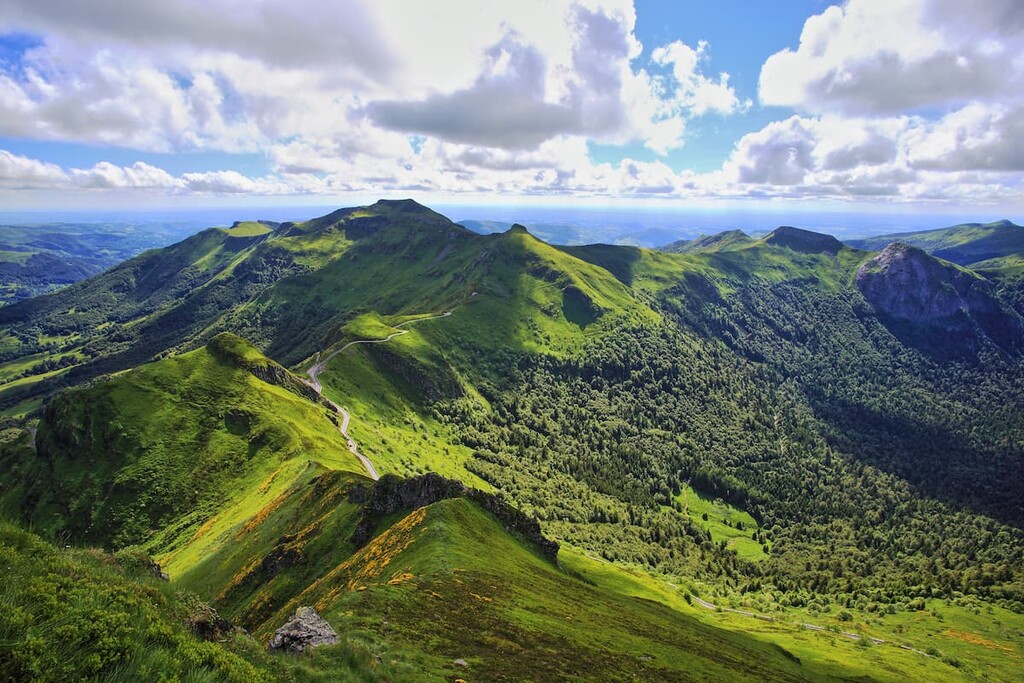Get PeakVisor App
Sign In
Search by GPS coordinates
- Latitude
- ° ' ''
- Longitude
- ° ' ''
- Units of Length

Yes
Cancel
Share ×

Scan the QR code and open PeakVisor on your phone
❤ Wishlist ×
Choose
Delete
The Massif Central is a large highland region located in central and south-central France. It encompasses around 15 percent of mainland France and its landscape is the result of the extensive volcanism that took place in the region over the last few million years. There are 9258 named mountains in the Massif Central, the highest and most prominent of which is Puy de Sancy (1,885 m/6,184 ft).
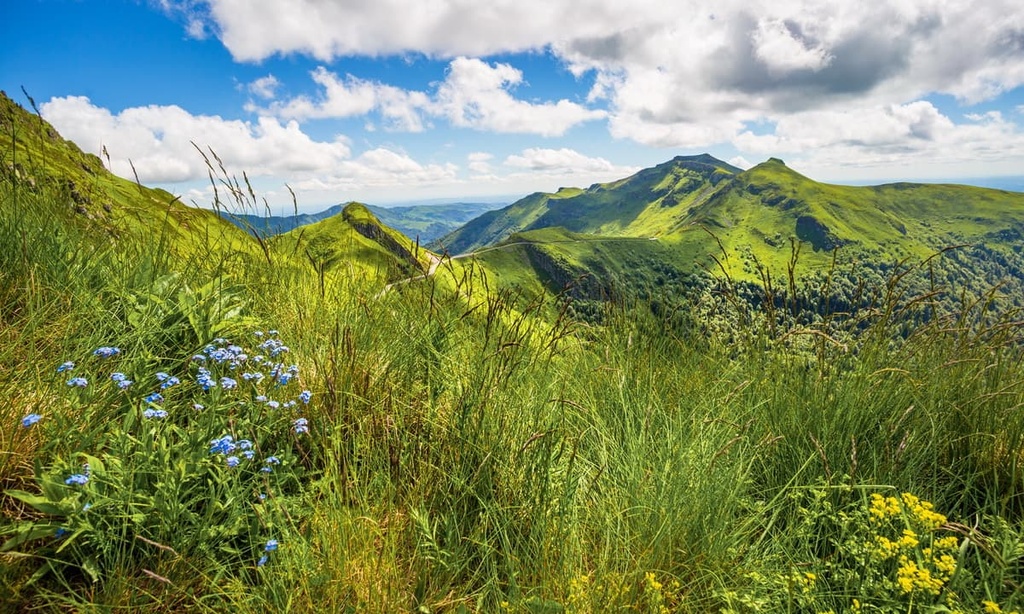
The Massif Central is a topographical and cultural region located in the central and south-central parts of mainland France. It is one of the most mountainous areas of the country besides the Alps in the southeastern part of France along the border with Italy and Switzerland and the Pyrenees in the southwestern region of the country along the border with Spain and Andorra.
Location-wise, the Massif Central is part of the regions of Bourgogne-Franche-Comté, Auvergne-Rhône-Alpes, Occitanie, and Nouvelle-Aquitaine. It is generally listed as being about 500 km (311 mi) long and 340 km (211 mi) wide.
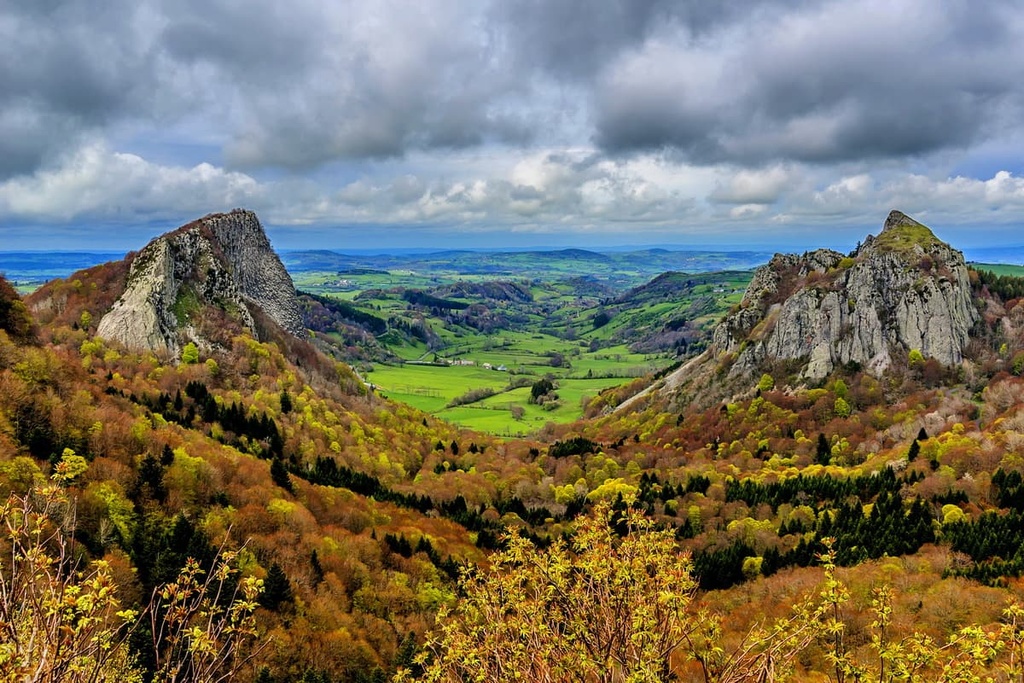
Within the region of Auvergne-Rhône-Alpes, the Massif Central is located at least partially in the following departments: Ardèche, Allier, Cantal, Haute-Loire, Loire, Puy-de-Dôme, and Rhône. In Occitanie, the range is located in the following departments:
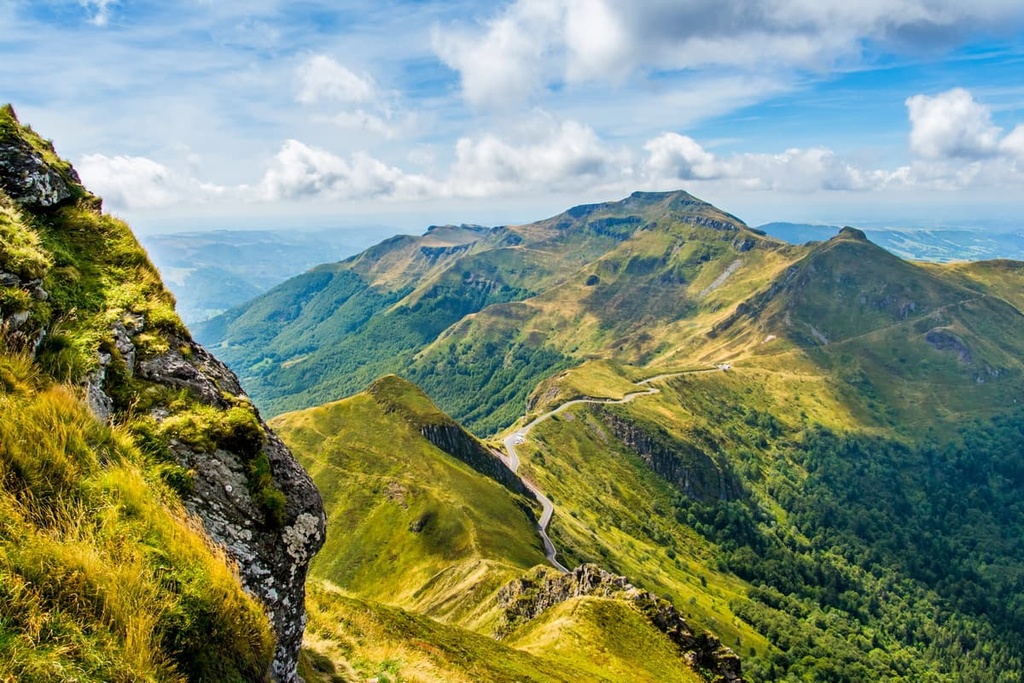
Finally, in Bourgogne-Franche-Comté, the range is located in the Saône-et-Loire department, and in Nouvelle-Aquitaine, it contains the departments of Corrèze, Creuse, and Haute-Vienne.
The Massif Central is also home to a number of outdoor recreation destinations. In fact, it contains ten nature and national parks, each of which offers something unique to visitors. These include:
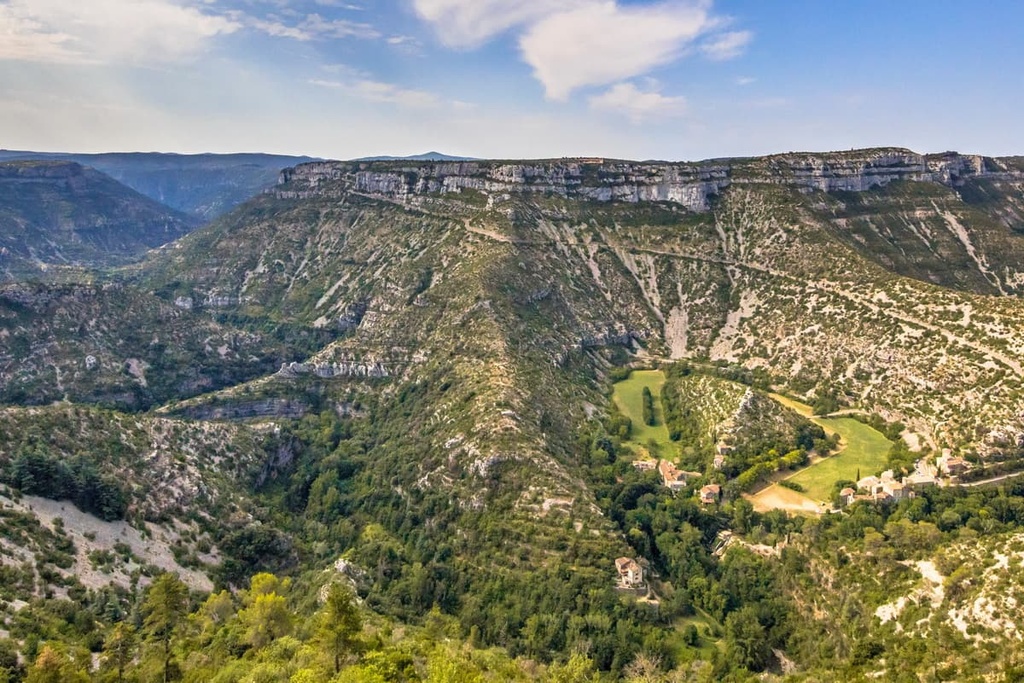
Geologically, the Massif Central is an area of particular interest. Much of the landscape that we see in the range today formed as the result of widespread volcanism that took place over the last few million years, though it has since subsided.
Technically, the Massif Central is one of two major basement massifs in metropolitan France (the other being the Armorican Massif). Many of the massif’s landforms were created during the Caledonian and Variscan orogenies and it saw some mountain-building activity during the Alpine orogeny, too.
However, most of the Massif Central’s major peaks and features formed as a result of volcanic activity. It’s unclear why this volcanism happened, but it’s clear that it’s had a major impact on the region.
In fact, many of the massif’s largest subranges, such as the Chaîne des Puys, Mounts of Cantal, and Monts Dore are extinct or inactive volcanoes.
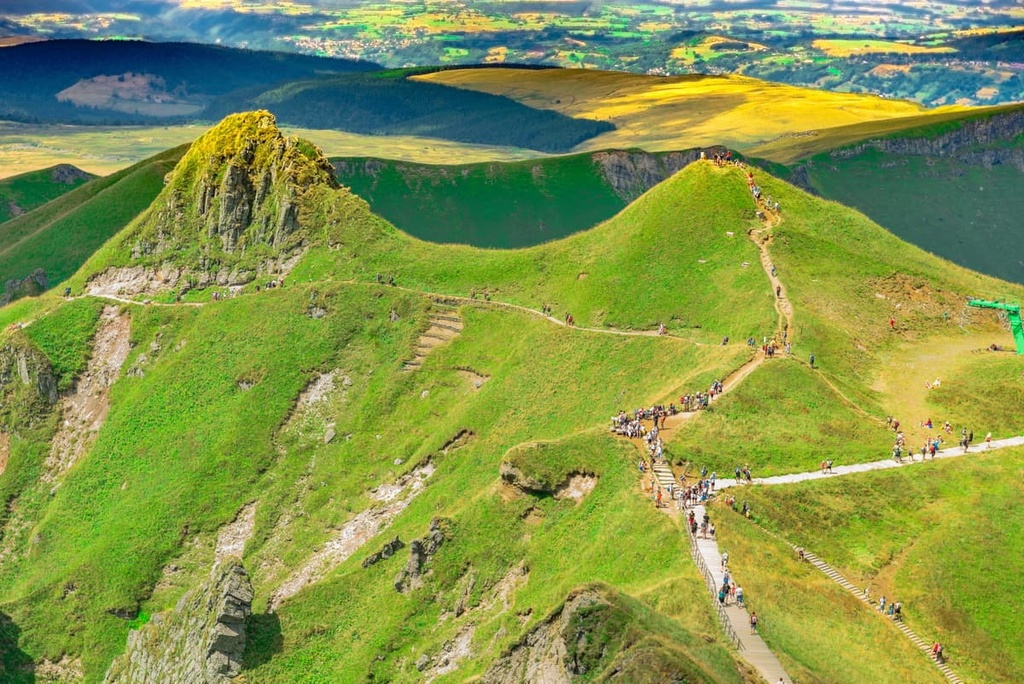
The tallest peak in the massif, Puy de Sancy, is an ancient stratovolcano that has been inactive for at least 220,000 years. Other peaks, like Puy de Dôme and Puy de Pariou are also volcanoes, though some mountains in the massif, like Mont Lozère, are not volcanic in origin.
Due to the volcanism that was once very common in the region, much of the rock in the Massif Central is igneous in origin. However, the region also experienced low-grade metamorphosis and it features some sedimentary deposits. In particular, there are some small areas of coal-bearing deposits in the massif as well as various conglomerates and carbonate rocks.
It’s also worth mentioning that the region experienced glaciation during the Pleistocene. Much of the massif was covered in valley glaciers and smaller ice caps, which carved out some of the cirques and valleys seen in the region to this day.
Other unique geologic tidbits about the range include the fact that it is home to a known meteorite impact site near Rochechouart. The actual crater has almost completely eroded away, though it’s believed that a meteorite struck the region during the Late Triassic.
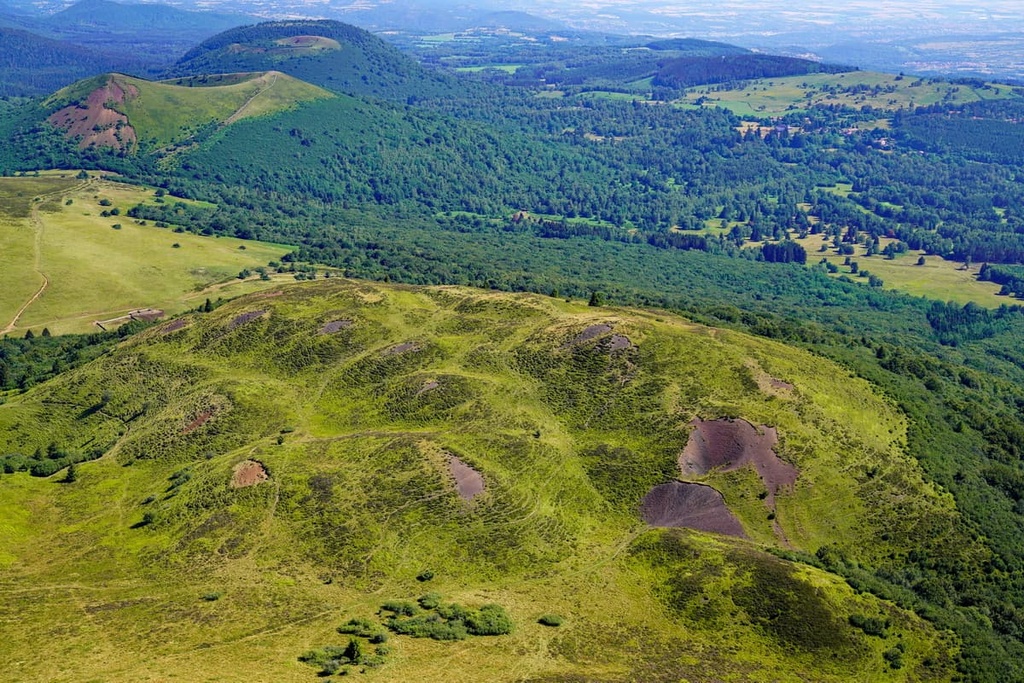
Within the Massif Central, there are also a number of subranges, including:
Major peaks in the range include Puy de Sancy, Puy de Mathonière, Pic de Nore, Plomb du Cantal, and Puy de Peyre Arse.
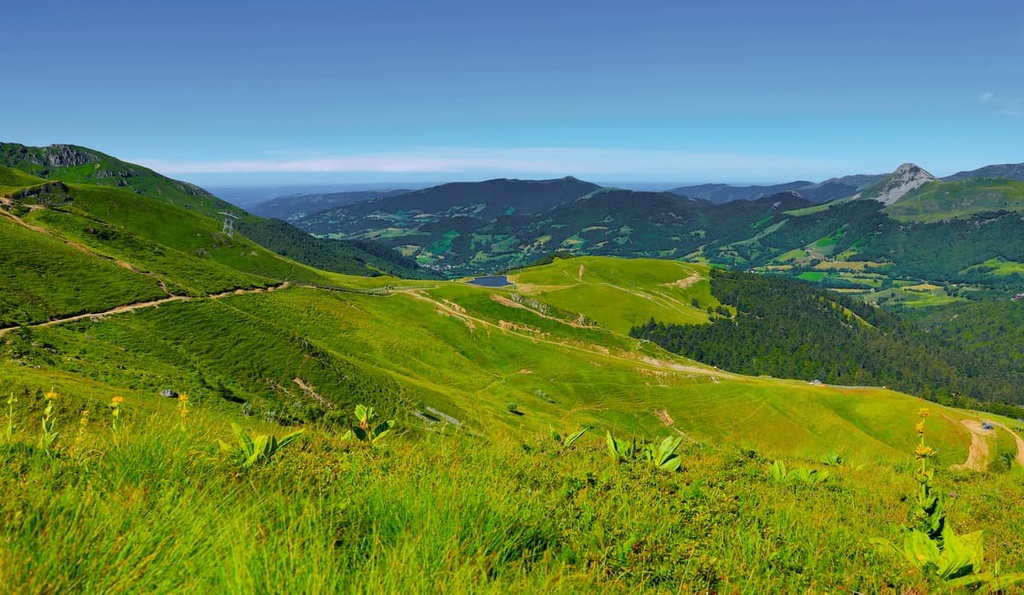
The Massif Central is a hub for biodiversity in metropolitan France. While only about 27 percent of France is forested, more than 30 percent of the Massif Central is covered in forested terrain.
Although most of the range has been logged for timber and other purposes in centuries past, there are some very small areas of old-growth forest in the region. However, most of the forests in the range today are the result of a dedicated reforestation policy that was implemented by the French government in the 1950s.
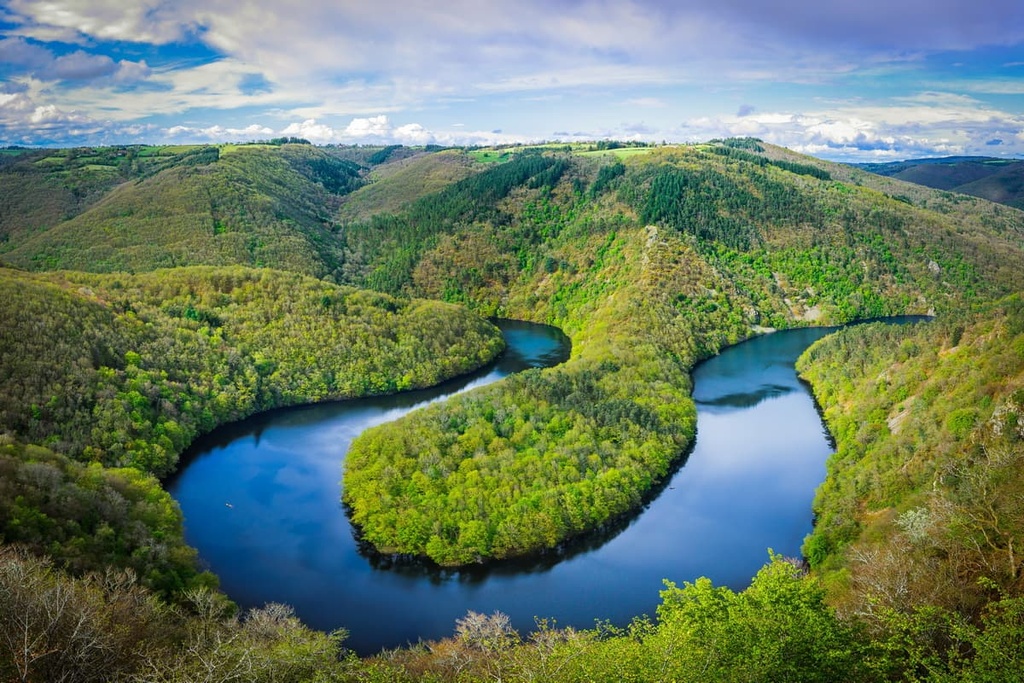
As far as tree species go, the Massif Central is primarily home to species like sessile oak, European oak, chestnut, beech, Scots pine, Douglas fir, European silver fir, and various sources.
With respect to wildlife, most of the species that you can find in other major mountainous regions of France can also be found in the Massif Central. This includes a very limited distribution of chamois, as well as marmots, gray wolves, pine martens, polecats, red deer, and wild boars. The Massif Central was also the site of a fairly successful griffon vulture reintroduction effort.
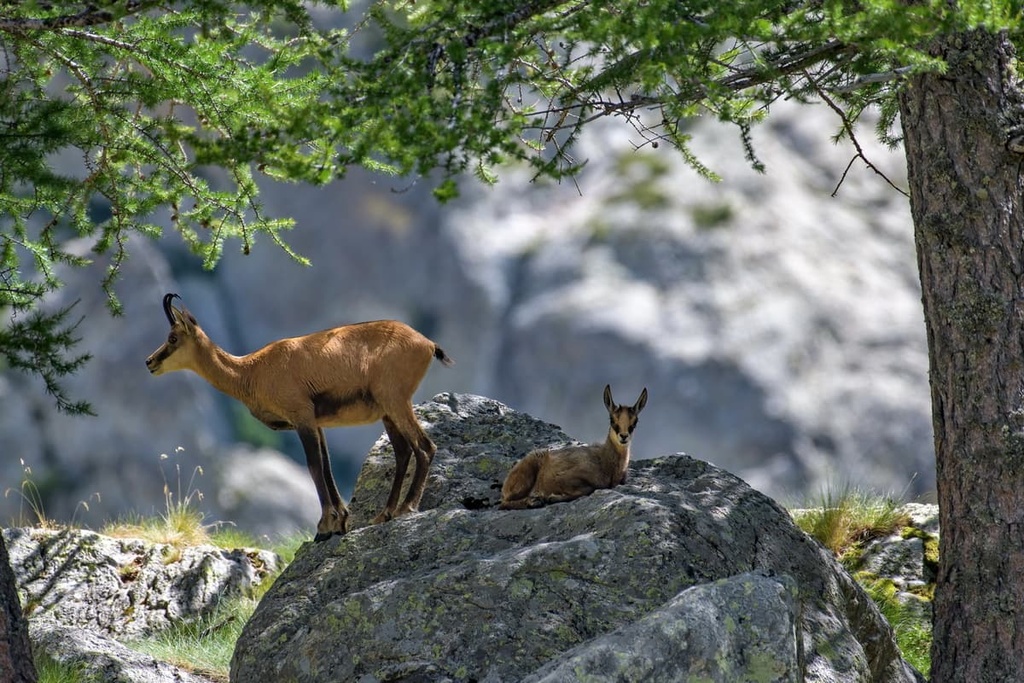
The Massif Central has long been an important area for humans in western Europe. It has been a site of major communities in the region since at least the Iron Age. In particular, the Arverni, a Gallic people, lived in what is now Auvergne during the Iron Age and early Roman period.
Between 58 and 50 BCE, the Massif Central was the site of a number of battles in the Gallic Wars, which were fought between Julius Caesar of Rome and the people of what was then called Gaul. One such battle, the Battle of Gergovia, was fought near what is now Clermont-Ferrand. It ended in a Gallic victory, but the region fell to the Romans soon afterward.
The area around Clermont-Ferrand then became a very important place for the Romans as it was one of the largest cities of Roman Gaul, which lasted until the fifth century CE.
However, after the Western Roman Empire fell, the region entered into a dark period where it experienced frequent raids by the Visigoths, among others. Eventually, it became part of the Visigothic kingdom and, later, the Kingdom of the Franks.
Interestingly, the Massif Central also played an important role in the First Crusade in the eleventh century. The Council of Clermont was a group of religious leaders and laypeople called by Pope Urban II in what is now the city of Clermont-Ferrand and it was the site of the call to arms that eventually led to the First Crusade.
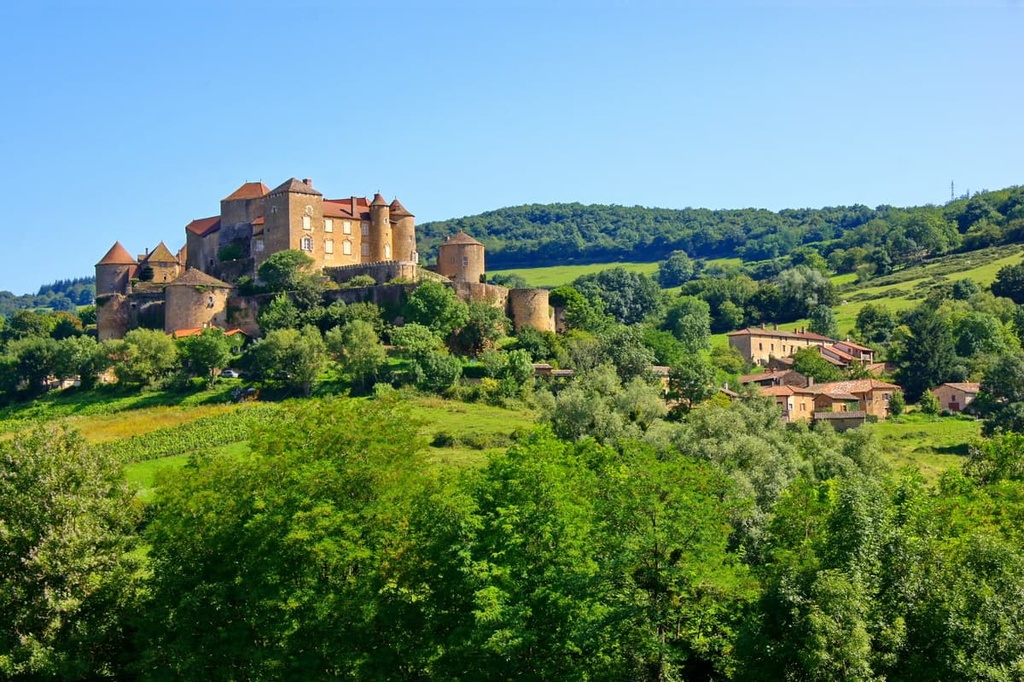
Throughout the Middle Ages, the Massif Central remained a heavily agricultural area. It became a major producer of various agricultural products, such as the now-famous Cantal cheese and Roquefort cheese.
Besides agriculture, the Massif Central also has some industrial areas, most of which are centered around major cities, such as Clermont-Ferrand, which is the home of the Michelin tire company.
Tourism has also started to take off in the region in recent years thanks to the opening of the A75 autoroute. The A75 crosses over the Millau Viaduct, and its construction has led to a huge increase in tourism and accessibility to the region in the last decade.
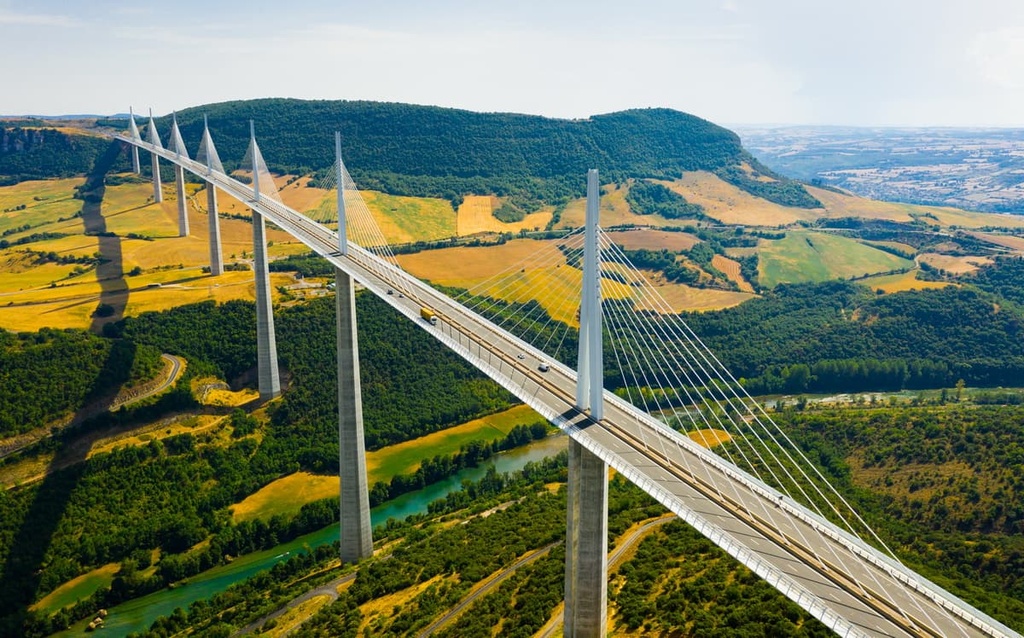
There’s no shortage of adventure to be had in France’s Massif Central. Here are some of the best hiking areas and trails to check out during your next trip to the region.
Cévennes National Park is a nationally-protected area that encompasses the bulk of the peaks of the Cévennes as well as the Cévennes Valleys. It is an area steeped in history and rich in biodiversity, so it’s a wonderful place for a day trip or longer adventure.
There are over 300 individual trails in the park to enjoy. These include hikes to the summits of Mont Lozère, Mont Aigoual, Pic Cassini, Rocher de l’Aigle, and the Corniches of Méjean, among others. A part of the GR 70 also travels through the park on the Stevenson Trail.
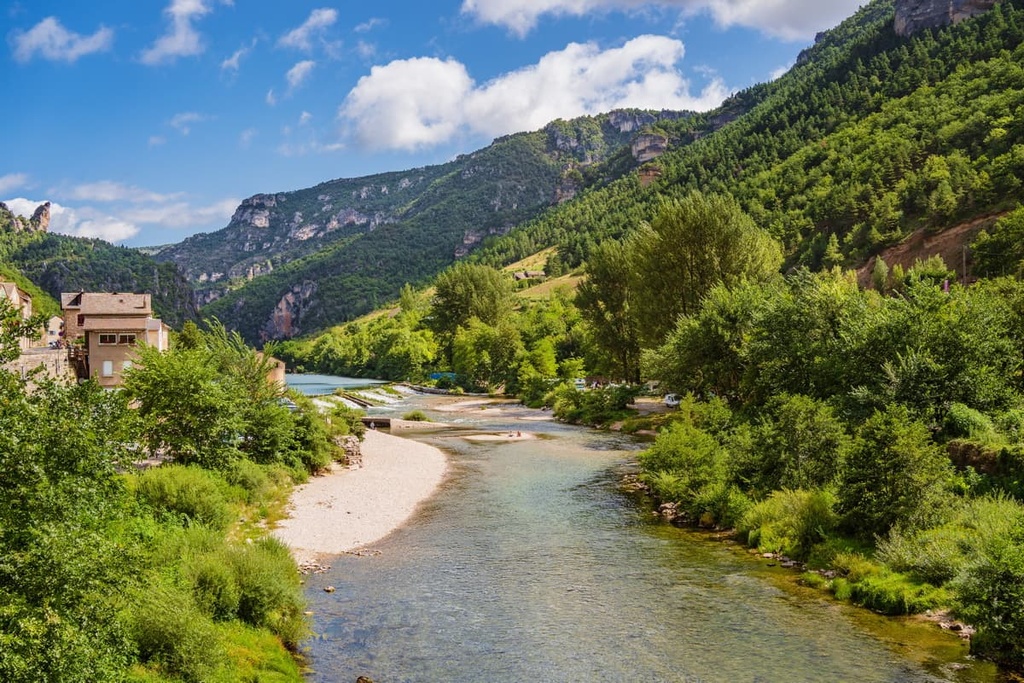
Situated in the southwestern part of the Massif Central, Parc naturel régional des Grands Causses is home to a gigantic collection of peaks. In fact, with an area of over 3,279 sq. km (1,266 sq. mi), it is one of the largest parks in France.
The park itself is home to a mix of both mountainous and agricultural land. There are countless lodges and restaurants to enjoy in the park’s dozens of small communities as well as hundreds of miles of trails to check out.
Some of the many trails that you can venture onto include hikes to the Troglodyte Villages of Gorges du Tarn and Les Corniches du Causse Noire.
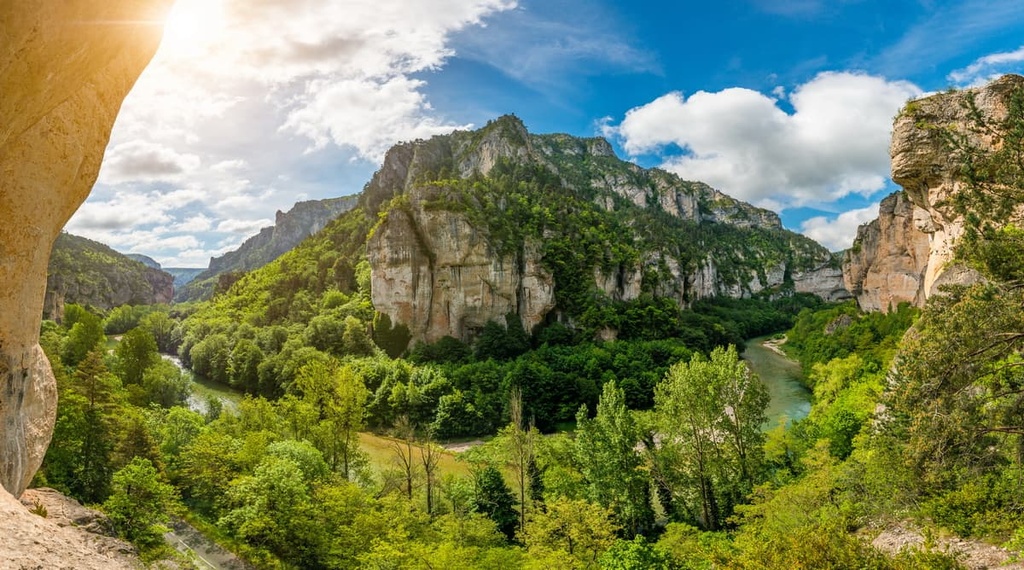
Parc naturel régional des Volcans d’Auvergne runs down the central part of the Massif Central. As its name suggests, it is home to a number of the range’s volcanic features, including the bulk of its dormant and extinct volcanoes.
This huge park has a total area of about 4,500 sq. km (1,740 sq. mi) and it is also a UNESCO World Heritage Site. It encompasses the bulk of the Chaîne des Puys, including the massif’s highest point, Puy de Sancy.
Inside the park, there’s a large network of trails for visitors to enjoy. There are hikes that take you to the top of Puy de Dôme, such as the Chemin de Muletiers and the Chemin des Chèvres, and trails to the top of Puy Pariou.
Additionally, there are many, many trails that you can follow to the top of Puy de Sancy depending on your starting point. Both the GR 4 and GR 30 travel near the peak, too.
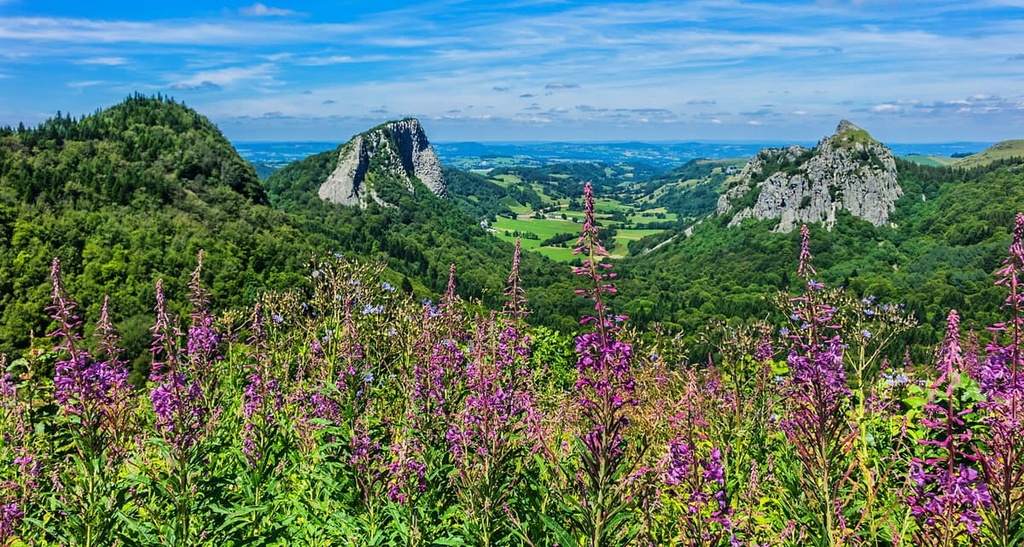
Located in the eastern part of the Massif Central, just outside of the city of Saint-Étienne, Parc naturel régional du Pilat is designed to protect the peaks of the Pilat massif. It encompasses some 700 sq. km (270 sq. mi) of terrain and it contains nearly 50 communities that are home to a total of over 50,000 people.
Parc naturel régional du Pilat is one of the biggest tourist destinations in the region because it is home to a great collection of different activities, including a system of hiking and walking trails as well as areas for alpine and nordic skiing.
As far as trails go, the park has its own network of over 1,500 km (932 mi) of paths. It is also crossed by a number of long-distance hikes including the GR 7, GR 42, and GR 65.
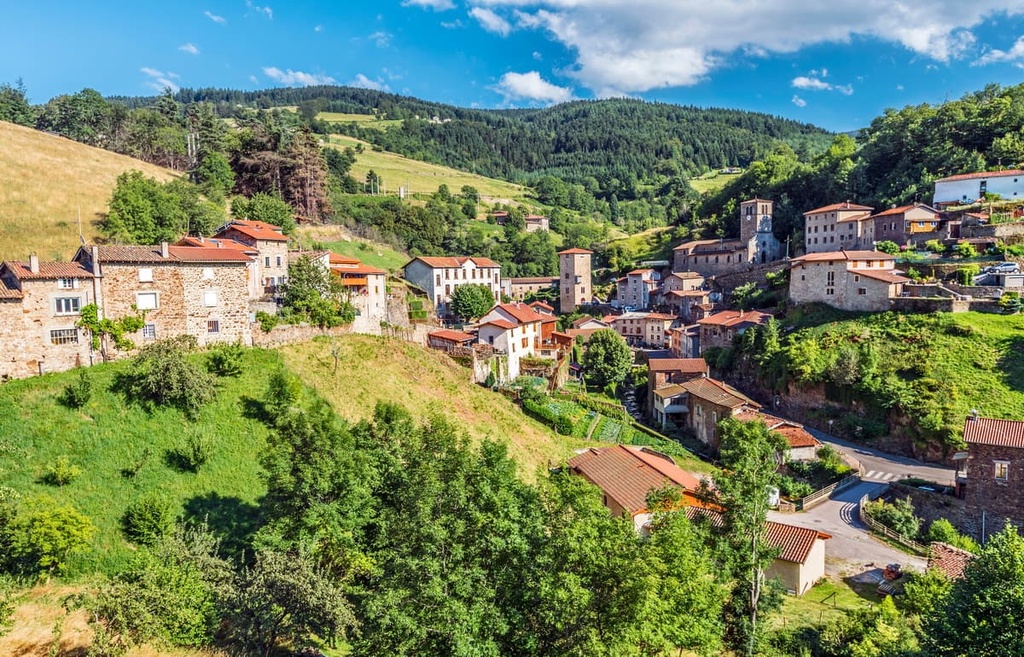
The Massif Central may not be as well-known as the Alps when it comes to skiing in France, but it is home to a handful of great resorts.
One such resort that’s worth checking out is Super Besse, which is located in the commune of Besse-et-Saint-Anastaise in Puy-de-Dôme on the slopes of Puy de Sancy. It offers 27 different trails and 21 ski lifts. The resort also has 125 km (78 mi) of groomed cross-country ski trails.
Another resort of note in the Massif Central is Le Lioran, which is located in Cantal. It is one of the most modern and developed ski resorts in the Massif Central as it offers not only 45 downhill ski trails, 15 cross-country ski trails, and 19 lifts, but also various lodges and restaurants.
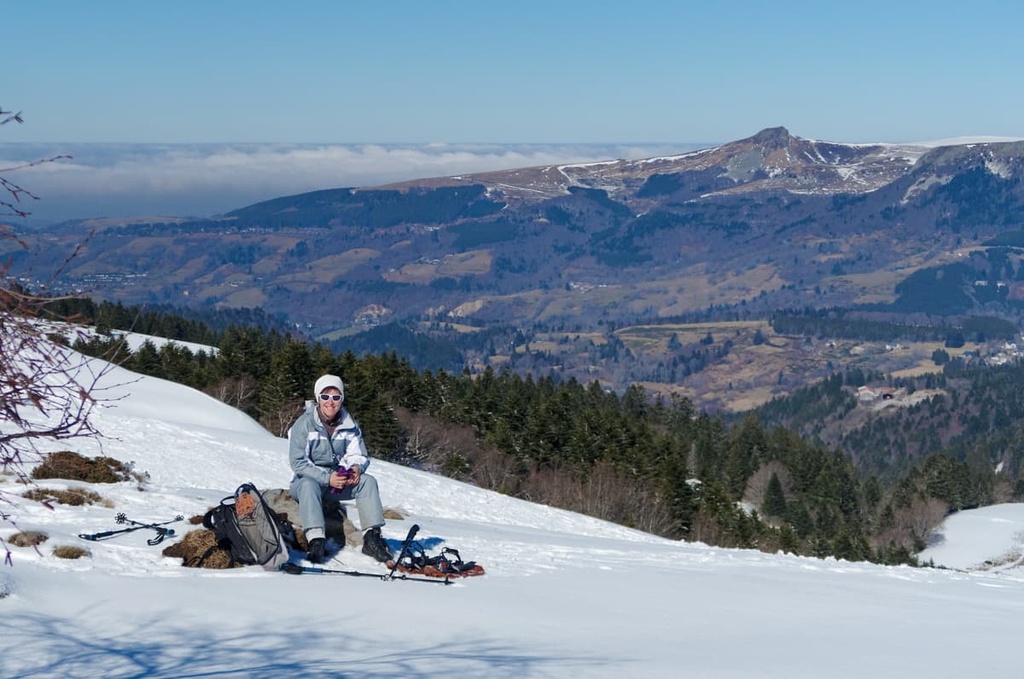
Other smaller resorts in the area include:
However, Le Lioran and Super Besse are the most popular ski destinations in the Massif Central due to their large size and plentiful amenities.
Looking for a place to stay in the Massif Central region of France? Here are some of the best cities and towns to check out during your visit to the region.
The city of Clermont-Ferrand is a major metropolitan area located in the heart of the Massif Central at the base of the Chaîne des Puys. It is home to about 150,000 people, making it one of the largest communities in the massif.
Clermont-Ferrand is a stunning city and a worthwhile destination in its own right. It is one of the oldest cities in France and it offers stunning views of its surrounding dormant volcanoes. It features a number of distinctive landmarks, including the Gothic Clermont-Ferrand Cathedral and the Place de Jaude.
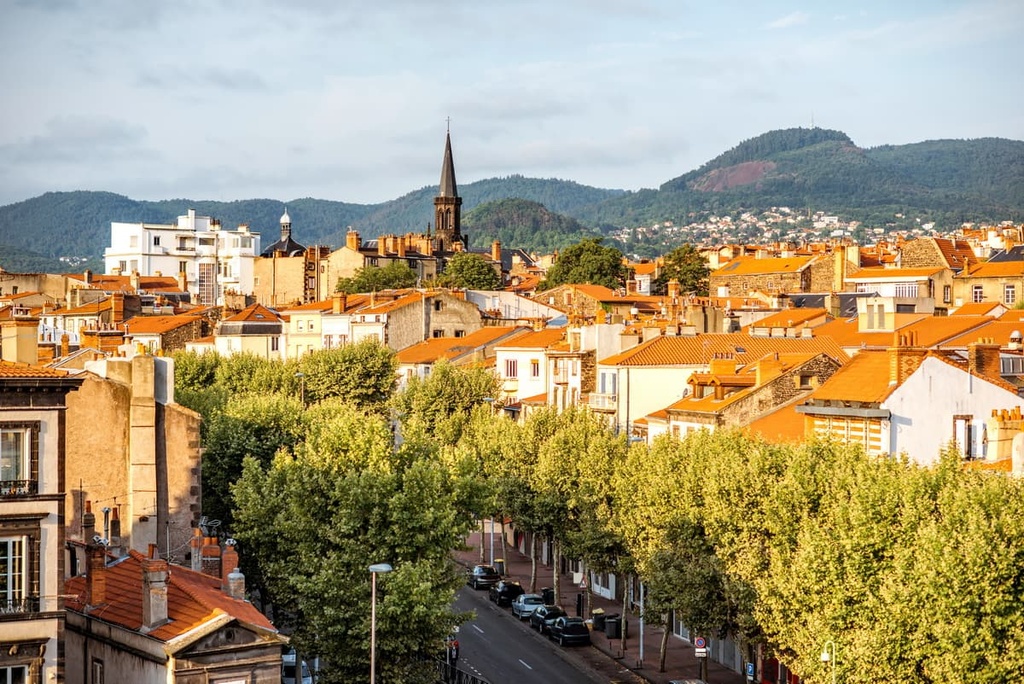
The city’s other claim to fame is that it is the headquarters of Michelin, the tire company that was founded in Clermont-Ferrand in 1889.
Michelin was founded by two brothers, Édouard and André, and it was the first producer of the revolutionary removable tire. Additionally, the Michelin Guide book series was created by the brothers in a marketing attempt to sell more tires by identifying top road trip destinations, hotels, and restaurants in France.
Limoges is a city of approximately 130,000 people that’s located on the western edge of the Massif Central. It is actually the second-most populous city in the region of Nouvelle-Aquitaine after Bordeaux, which is the home of the world-class wine-producing region.
While Limoges might not be as well known as Bordeaux on the global stage, it is an ancient city that was founded in 10 BCE. It also became one of the country’s leading producers of fine porcelain during the late eighteenth century.
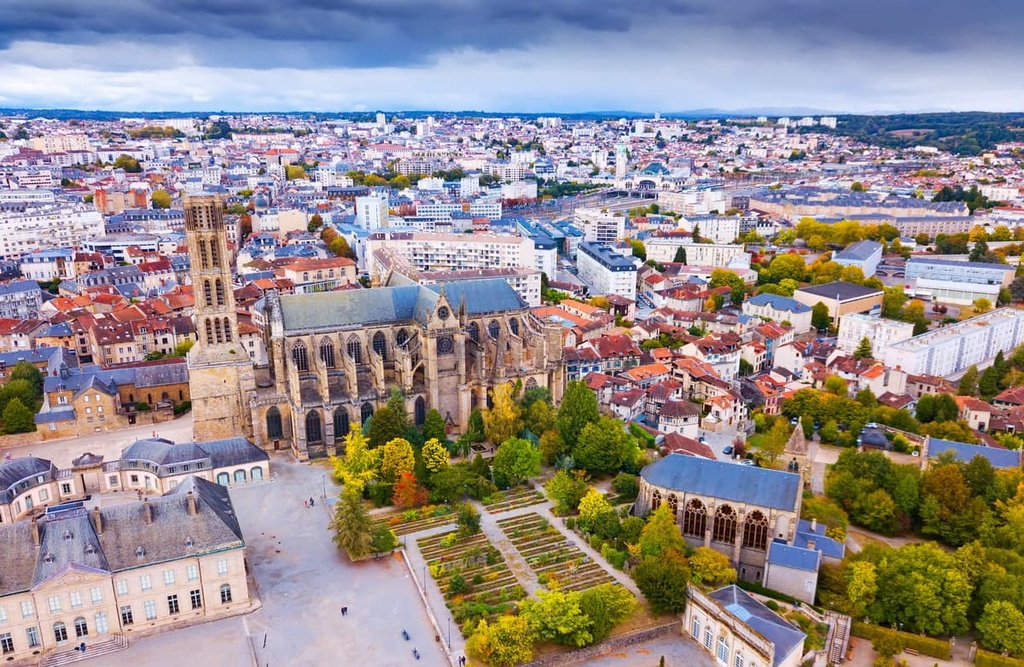
Nowadays, Limoges is known for its many historic buildings and historic sites, including the Crypt of Saint Martial, Limoges Cathedral, Chapelle Saint-Aurélien, and its botanical gardens. Limoges is relatively easy to get to by road and train, too, and it has a small international airport.
Situated on the eastern edge of the Massif Central, Saint-Étienne is a city of some 175,000 people, which makes it the second-largest commune in the region. Saint-Étienne is also part of a large urban area that services dozens of smaller communities in the area.
The community of Saint-Étienne has a long history of weapons manufacturing that dates back to the sixteenth century. It later became known for its ribbons manufacturing industry in the seventeenth century and then it became the heart of a larger coal mining industry in the eighteenth century.
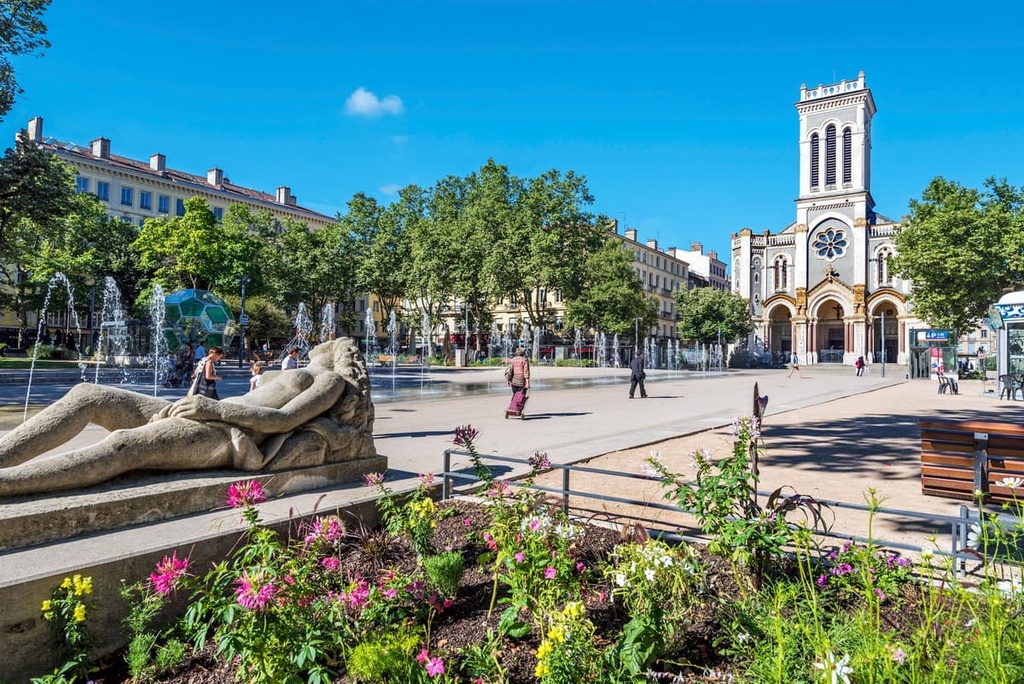
These days, Saint-Étienne is perhaps better known for its many festivals and historic buildings. It hosts the biennale Massenet Festival and it is home to four important art museums. Saint-Étienne is also a transportation hub in the region as it is located along the road that connects Lyon and Toulouse.
In addition to the three cities listed above that are located in the Massif Central region itself, there are a number of other major cities that are situated just outside the range. This includes:
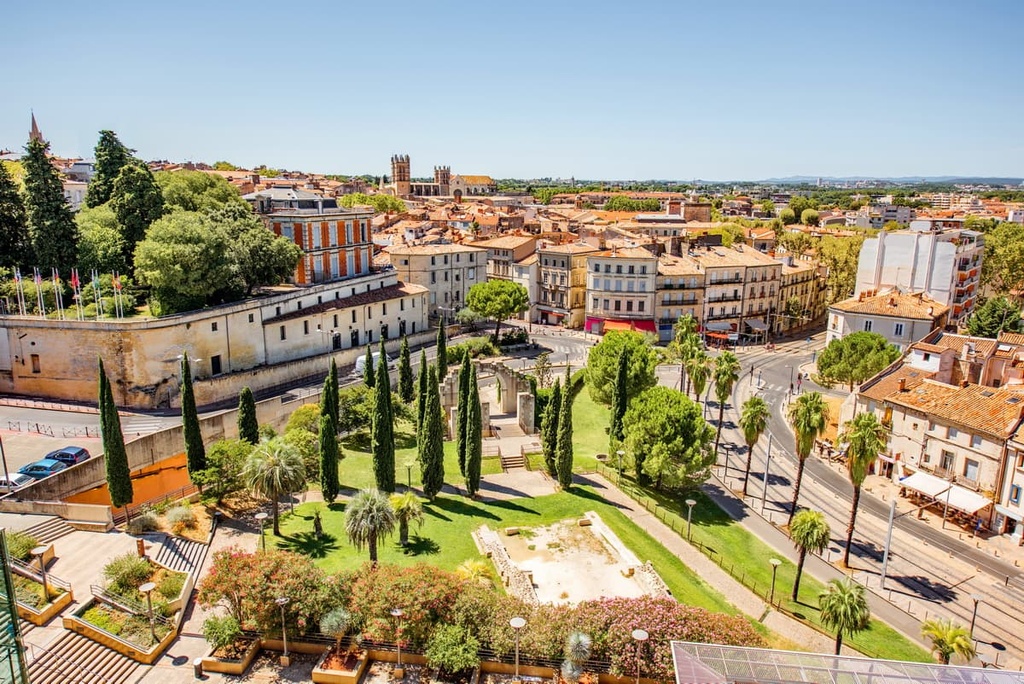
Explore Massif Central with the PeakVisor 3D Map and identify its summits.
